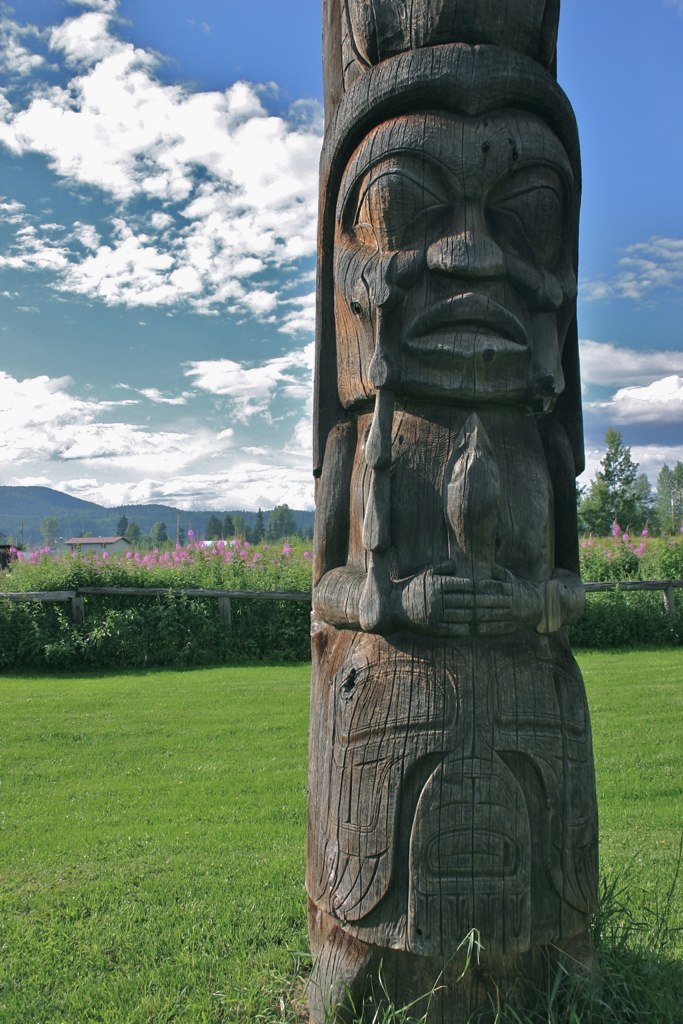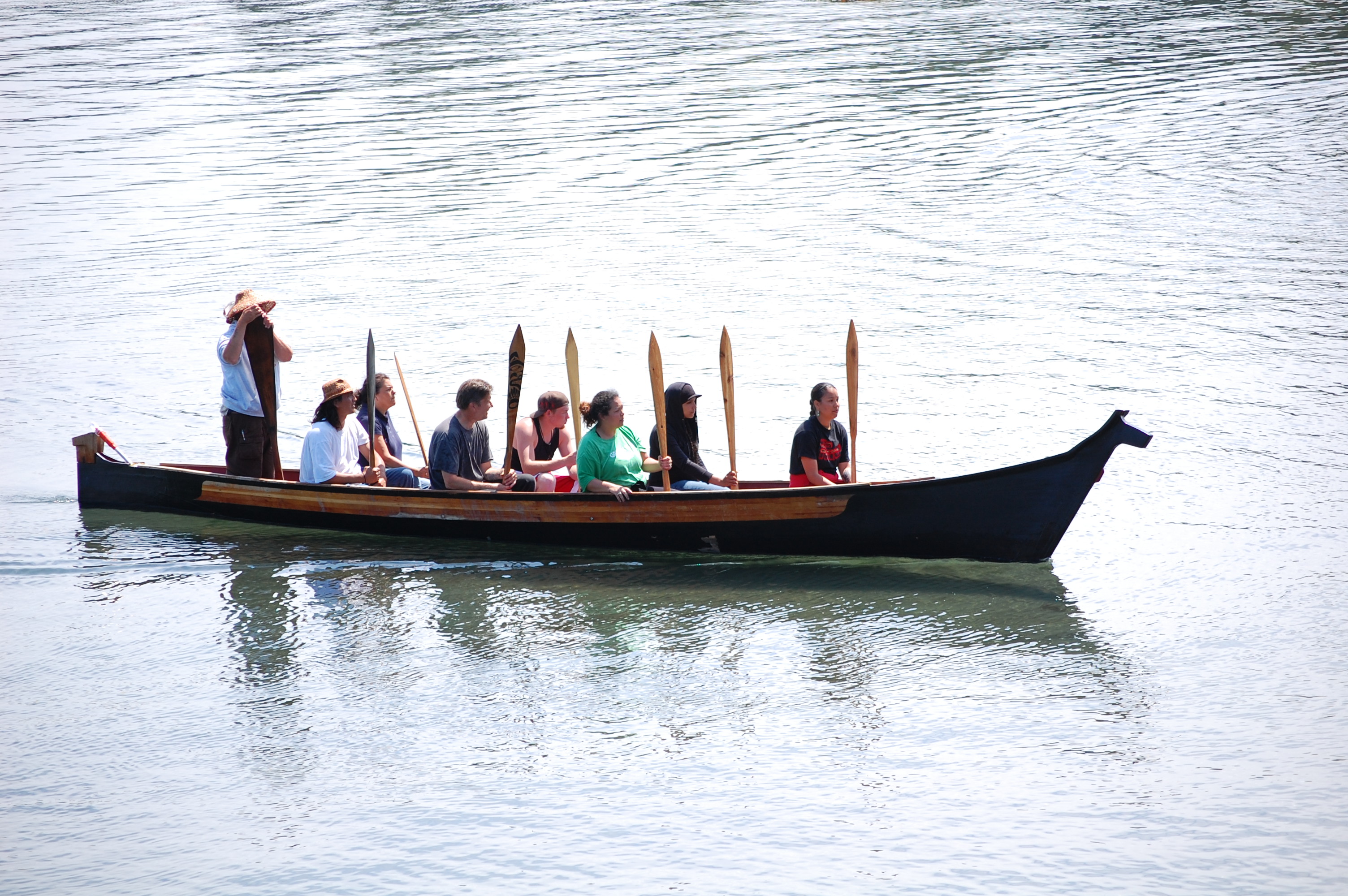Browse "Indigenous Peoples"
-
Article
Eenoolooapik
Eenoolooapik, also known as Bobbie, Inuk traveller, guide (born circa 1820 in Qimisuk [or Qimmiqsut], Cumberland Sound, NT; died in 1847 in Cumberland Sound, NU). Eenoolooapik provided British whaling captain William Penny with a map of Cumberland Sound that led to the rediscovery of that area 255 years after English explorer John Davis first saw it. The geographic information Eenoolooapik provided to whalers led to years of permanent whaling camps in Cumberland Sound.
"https://d2ttikhf7xbzbs.cloudfront.net/Eenoolooapik (2).jpg" // resources/views/front/categories/view.blade.php
https://d2ttikhf7xbzbs.cloudfront.net/Eenoolooapik (2).jpg.jpg)
-
Article
Ehattesaht
The Ehattesaht are a Nuu-chah-nulth First Nation that occupies 660 km2 (66,000 hectares) of territory on the west coast of Vancouver Island. A member of the Nuu-chah-nulth Tribal Council, the Ehattesaht have 539 registered members as of October 2021.
"https://d2ttikhf7xbzbs.cloudfront.net/media/media/bef3cc60-b45e-4a19-b10f-b8248f21b21b.jpg" // resources/views/front/categories/view.blade.php
https://d2ttikhf7xbzbs.cloudfront.net/media/media/bef3cc60-b45e-4a19-b10f-b8248f21b21b.jpg
-
Article
Elijah Harper
Elijah Harper, OM, Oji-Cree politician, consultant, policy analyst (born 3 March 1949 at Red Sucker Lake, MB; died 17 May 2013 in Ottawa, ON). Elijah Harper is best known for the role he played in scuttling the Meech Lake Accord, for which he was named the Canadian Press newsmaker of the year in 1990. Harper also served as the Minister for Northern Affairs. From 1993 to 1997 he represented the riding of Churchill in the federal parliament.
"https://d2ttikhf7xbzbs.cloudfront.net/media/media/73c1f655-bfcc-4aa6-9251-c0d5c550fde4.jpg" // resources/views/front/categories/view.blade.php
https://d2ttikhf7xbzbs.cloudfront.net/media/media/73c1f655-bfcc-4aa6-9251-c0d5c550fde4.jpg
-
Article
Elsie Knott
Elsie Marie Knott (née Taylor), Ojibwe chief, community leader, entrepreneur (born 20 September 1922 on Mud Lake Reserve [now Curve Lake First Nation], ON; died there on 3 December 1995). Knott was the first elected female First Nations chief in Canada, after a 1951 amendment to the Indian Act permitted Indigenous women to vote and participate in band governments. She was also chief of her First Nation for 14 years, from 1954 to 1962 and from 1970 to 1976. Knott was dedicated to preserving the Ojibwe language and was known for her community activism and support of education.
"https://d2ttikhf7xbzbs.cloudfront.net/media/new_article_images/curvelake/curve lake.JPG" // resources/views/front/categories/view.blade.php
https://d2ttikhf7xbzbs.cloudfront.net/media/new_article_images/curvelake/curve lake.JPG -
Article
First Nations in Canada
First Nation is one of three groupings of Indigenous people in Canada, the other two being Métis and Inuit. Unlike Métis and Inuit, most First Nations hold reserve lands. Members of a First Nation may live both on and off these reserves. While the term First Nation can describe a large ethnic grouping (e.g. the Cree Nation), in other cases it is synonymous with the term band. The term band was originally chosen by the federal government and used in the Indian Act. The word band describes smaller communities. Many First Nations prefer the term First Nation over band.
"https://d2ttikhf7xbzbs.cloudfront.net/media/media/4bdede30-06f1-4f71-9047-c7db15051829.jpg" // resources/views/front/categories/view.blade.php
https://d2ttikhf7xbzbs.cloudfront.net/media/media/4bdede30-06f1-4f71-9047-c7db15051829.jpg
-
List
First Nations in British Columbia
There are 203 First Nations in British Columbia. First Nation is one of three groupings of Indigenous people in Canada, the other two being Métis and Inuit. Unlike Métis and Inuit, First Nations may hold reserve lands, and members of a First Nation can live both on and off these reserves. While the term First Nation can describe a large ethnic grouping (e.g. the Dene Nation), in other cases it is synonymous with the term band, a word originally chosen by the federal government and used in the Indian Act. The word band describes smaller communities, such as the ones listed below. Many First Nations prefer the term First Nation over band. In terms of larger ethnic groupings, First Nations in British Columbia are part of the Coast Salish, Dakelh, Dene, Haida, Kaska Dena, Ktunaxa, Nisga’a, Nlaka’pamux, Okanagan, Secwepemc, Sekani, Stl’atl’imx, Sto:lo, Tahltan, Tlingit, Tsilhqot’in, Tsimshian and Wet’suwet’en.
"https://d2ttikhf7xbzbs.cloudfront.net/media/media/e3bcb984-16ff-4f24-ac3d-1794f2fa51f5.JPG" // resources/views/front/categories/view.blade.php
https://d2ttikhf7xbzbs.cloudfront.net/media/media/e3bcb984-16ff-4f24-ac3d-1794f2fa51f5.JPG -
Article
Francis Pegahmagabow
Francis “Peggy” Pegahmagabow, Anishinaabe (Ojibwe) chief, Indigenous rights advocate, war hero (born on 9 March 1891 on the Parry Island reserve, ON; died 5 August 1952 at Parry Island, ON). One of the most highly decorated Indigenous people in Canada during the First World War, Pegahmagabow became a vocal advocate for Indigenous rights and self-determination. (See also Indigenous Peoples and the World Wars.)
"https://d2ttikhf7xbzbs.cloudfront.net/Francis Pegahmagabow (2).jpg" // resources/views/front/categories/view.blade.php
https://d2ttikhf7xbzbs.cloudfront.net/Francis Pegahmagabow (2).jpg.jpg)
-
Article
Freda Ahenakew
Freda Ahenakew, OC, Cree scholar, author (born 11 February 1932 on Ahtahkakoop First Nation, SK; died 8 April 2011 at Muskeg Lake First Nation, SK). Ahenakew is recognized as a leader in the acknowledgment and revitalization of the Cree language in Canada. In her life, Ahenakew helped to preserve the oral traditions of the Cree people and share Cree traditions and stories with Indigenous and non-Indigenous peoples alike. (See also Indigenous Language Revitalization in Canada.)
"https://d2ttikhf7xbzbs.cloudfront.net/media/Twitter_Cards/Freda.jpg" // resources/views/front/categories/view.blade.php
https://d2ttikhf7xbzbs.cloudfront.net/media/Twitter_Cards/Freda.jpg
-
Article
Freda Diesing
Freda Diesing, Haida artist (born 2 June 1925 in Prince Rupert, BC; died there 3 December 2002). Diesing was best known for her contributions to reviving traditional Haida art forms, including wood carving, mask carving and totem carving. She was one of the few women carvers who mastered the medium, and was partly responsible for bringing the style to an international audience. Diesing worked to ensure the style and tradition of Haida art was passed on to new generations. (See also Northwest Coast Indigenous Art and Contemporary Indigenous Art in Canada.)
"https://d2ttikhf7xbzbs.cloudfront.net/FredaDiesing/FredaMask1.jpg" // resources/views/front/categories/view.blade.php
https://d2ttikhf7xbzbs.cloudfront.net/FredaDiesing/FredaMask1.jpg
-
Article
Fur Industry
The Canadian fur industry consists of companies that buy raw furs from trappers, dealers or fur-marketing companies (e.g., Hudson's Bay Company raw-fur auctions), send them to fur dressers and dyers in Toronto, match the skins and cut and sew them into garments. Most manufacturers make coats and most specialize in two or three types of fur only. Before the coat can be finished, it must go through a fur-cleaning process and some companies do only this. Some cleaners also maintain cold fur-storage vaults to house furs during the summer, but many retail furriers also have their own vaults. Fur factories are generally small, with 279 of the 280 factories employing fewer than 50 people; only one of the 280 operating factories employed more than 100 people in 1986. In that year there were 3,700 furriers in the manufacturing work force, with about 2950 in Quebec, 675 in Ontario and 75 in Manitoba. Almost all fur companies are Canadian owned; there is some foreign ownership, mainly American, in the retail sector and some Japanese investment in the manufacturing sector.
"https://d2ttikhf7xbzbs.cloudfront.net/media/media/a4d6e476-5e53-4126-9ee6-313b64235660.jpg" // resources/views/front/categories/view.blade.php
https://d2ttikhf7xbzbs.cloudfront.net/media/media/a4d6e476-5e53-4126-9ee6-313b64235660.jpg
-
Article
Genocide
Genocide is the intentional destruction of a particular group through killing, serious physical or mental harm, preventing births and/or forcibly transferring children to another group. The Canadian government has formally recognized certain instances of genocide abroad, including the Armenian genocide, the Holodomor, the Holocaust, the Rwandan genocide, the ethnic cleansing in Bosnia, the Uyghur genocide and the Rohingya genocide. Within Canada, some historians, legal scholars and activists have claimed that the historical, intergenerational and present treatment of Indigenous peoples are acts of genocide.
"https://d2ttikhf7xbzbs.cloudfront.net/media/media/1f69f381-4d3b-489f-aba6-0a7dd06d3e92.jpg" // resources/views/front/categories/view.blade.php
https://d2ttikhf7xbzbs.cloudfront.net/media/media/1f69f381-4d3b-489f-aba6-0a7dd06d3e92.jpg
-
Article
Genocide and Indigenous Peoples in Canada
Genocide is the intentional destruction of a particular group through killing, serious physical or mental harm, preventing births and/or forcibly transferring children to another group. The term has been applied to the experiences of Indigenous peoples in Canada, particularly in the final reports of the Truth and Reconciliation Commission (see also Residential Schools) and the Missing and Murdered Indigenous Women and Girls inquiry.
"https://d2ttikhf7xbzbs.cloudfront.net/Genocide_IP_Tweetonly.jpg" // resources/views/front/categories/view.blade.php
https://d2ttikhf7xbzbs.cloudfront.net/Genocide_IP_Tweetonly.jpg
-
Article
Geographic Distribution of the Dorset Culture
Around 2,800 years ago (ca. 800 BCE), the Palaeo-Inuit groups living in the Eastern North American Arctic began to drastically change. These later Palaeo-Inuit groups are collectively called the “Dorset” by archaeologists. They had many differences from their Pre-Dorset ancestors. The Dorset people would persist in the Arctic until roughly 600-700 years ago (ca. 1300-1400 CE). After this point, they disappeared. This happened only a few centuries after the arrival of early Inuit (Thule) groups. They were genetically and culturally distinct from the Dorset. Archaeologists separate this roughly 2,000-year period of Dorset existence into three different periods or traditions. These periods are the Early Dorset (ca. 800 BCE to 1 CE), Middle Dorset (ca. 1 to 500 CE) and Late Dorset (ca. 500 to 1400 CE). There is ongoing debate regarding the differences and similarities between these time periods. However, changes in terms of technology, domestic architecture, mobility and geographic range did occur (see also Dorset Culture).
"https://d2ttikhf7xbzbs.cloudfront.net/DorsetCulture/Figure2EarlyDorsetGeographicLocation_updated.jpg" // resources/views/front/categories/view.blade.php
https://d2ttikhf7xbzbs.cloudfront.net/DorsetCulture/Figure2EarlyDorsetGeographicLocation_updated.jpg
-
Article
Gitxsan
Gitxsan (Gitksan), meaning “People of the River Mist,” live along the Skeena River of northwestern British Columbia in the communities of Hazelton, Kispiox and Glen Vowell (the Eastern Gitxsan bands) and Kitwanga, Kitwankool and Kitsegukla (the Western Gitxsan). In the 2021 census, 4,950 people claimed Gitxsan ancestry.
"https://d2ttikhf7xbzbs.cloudfront.net/media/media/759dfbd5-9744-473b-aab1-1cc99f444e55.jpg" // resources/views/front/categories/view.blade.php
https://d2ttikhf7xbzbs.cloudfront.net/media/media/759dfbd5-9744-473b-aab1-1cc99f444e55.jpg
-
Article
Government Apology to Former Students of Residential Schools
On 11 June 2008 Prime Minister Stephen Harper stood in the House of Commons to offer, on behalf of the Government of Canada, an apology to Indigenous peoples in Canada for the abuse, suffering, and generational and cultural dislocation that resulted from assimilative, government-sanctioned residential schools. The apology specifically addresses the assimilative practices of the government, the forced removal of children from their families, the abuse suffered by many of those children, and the resulting effects of these policies.
"https://d2ttikhf7xbzbs.cloudfront.net/media/media/481d8ab1-addc-42d1-8b24-37fcd08165dd.jpg" // resources/views/front/categories/view.blade.php
https://d2ttikhf7xbzbs.cloudfront.net/media/media/481d8ab1-addc-42d1-8b24-37fcd08165dd.jpg


